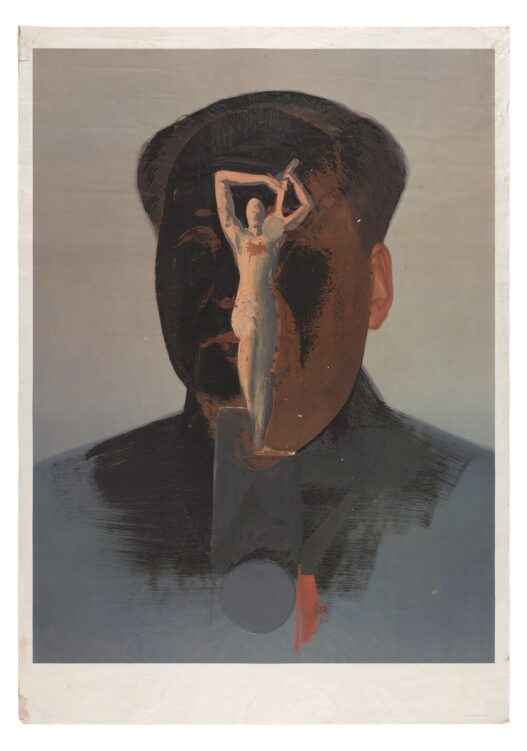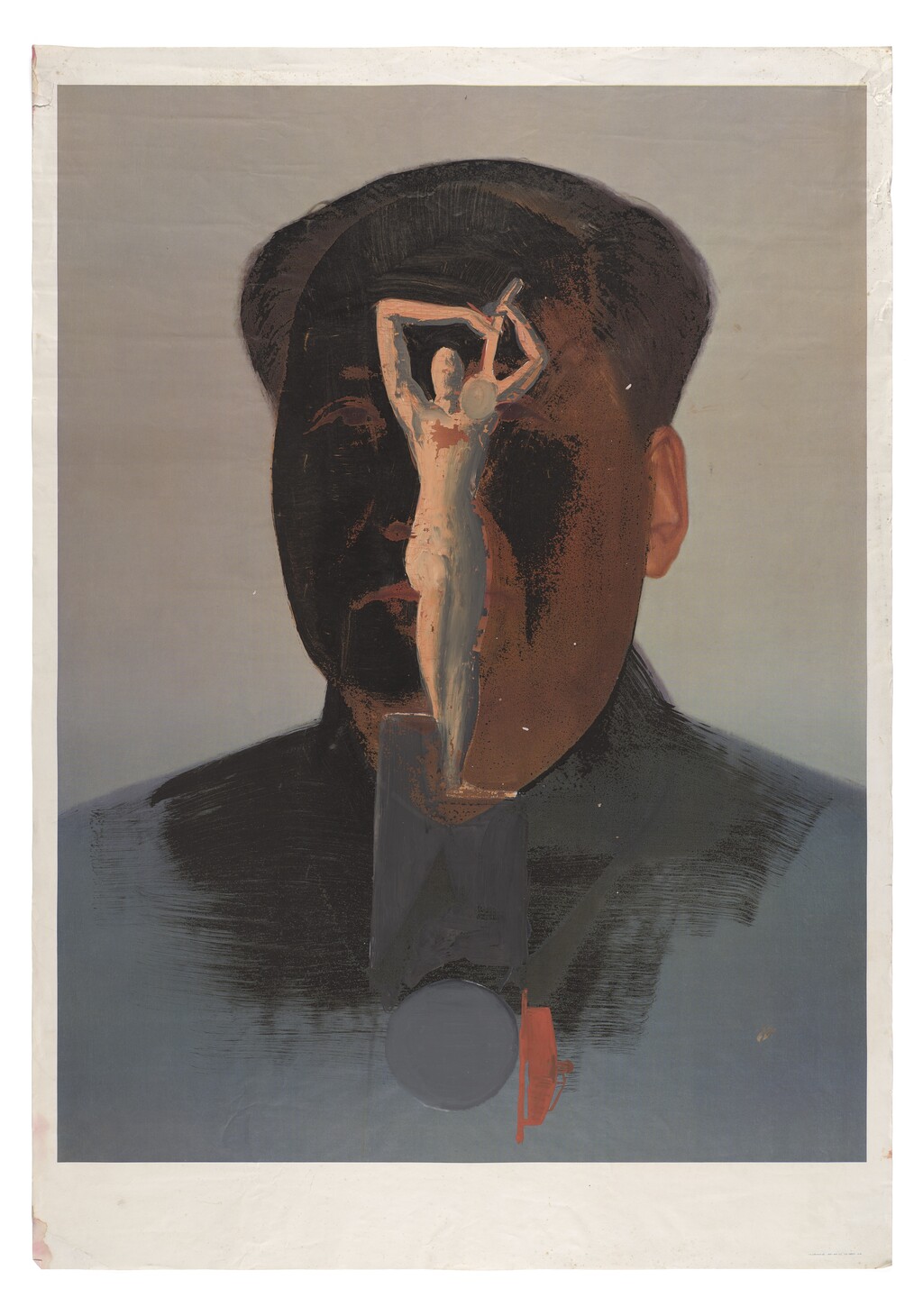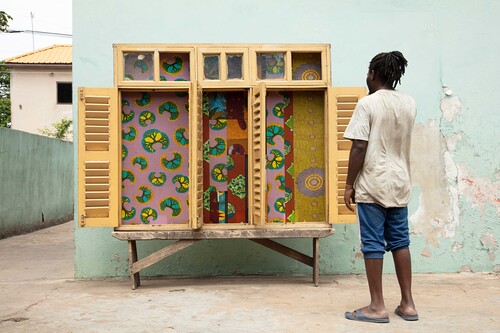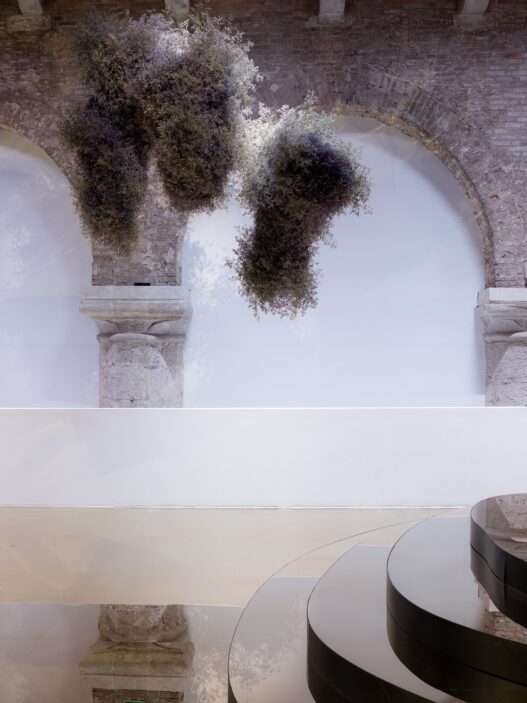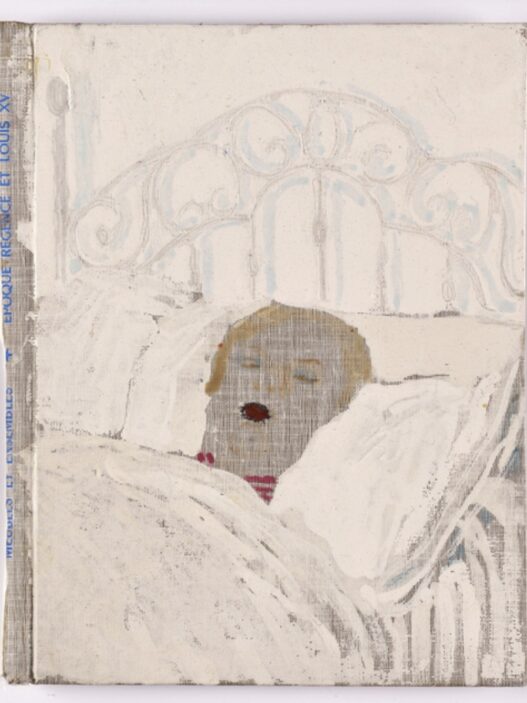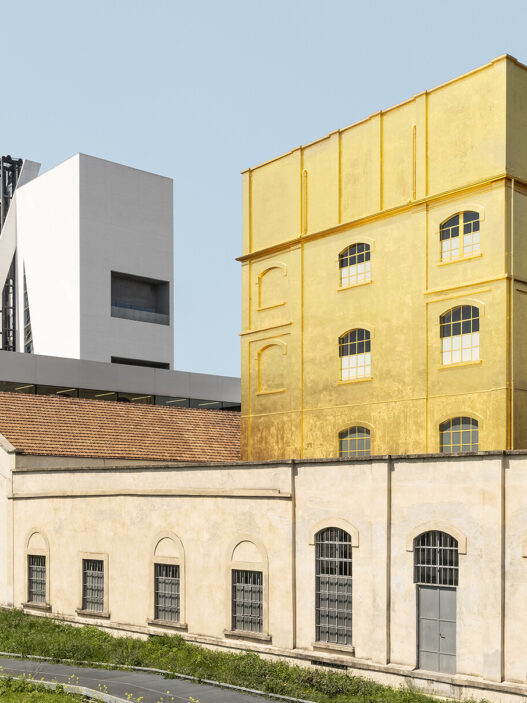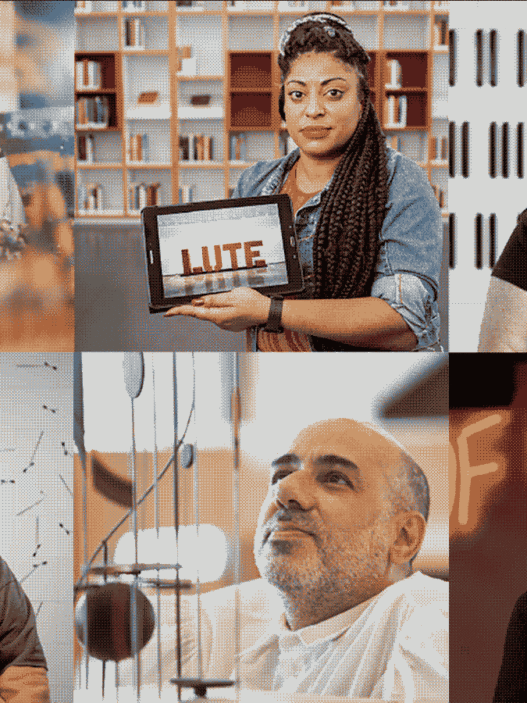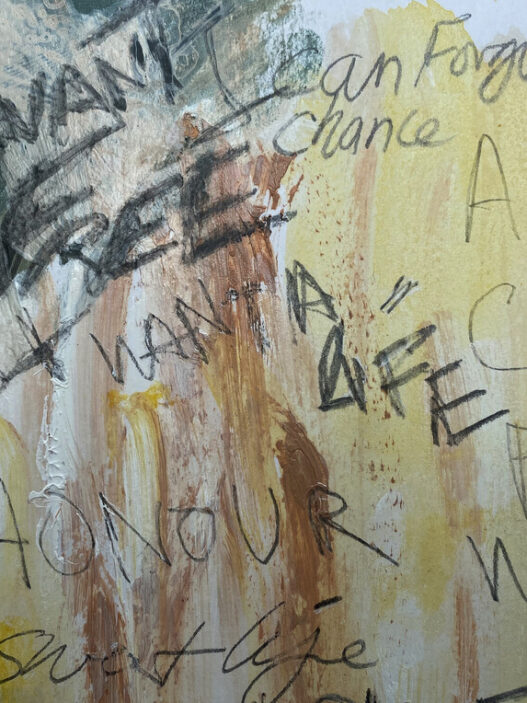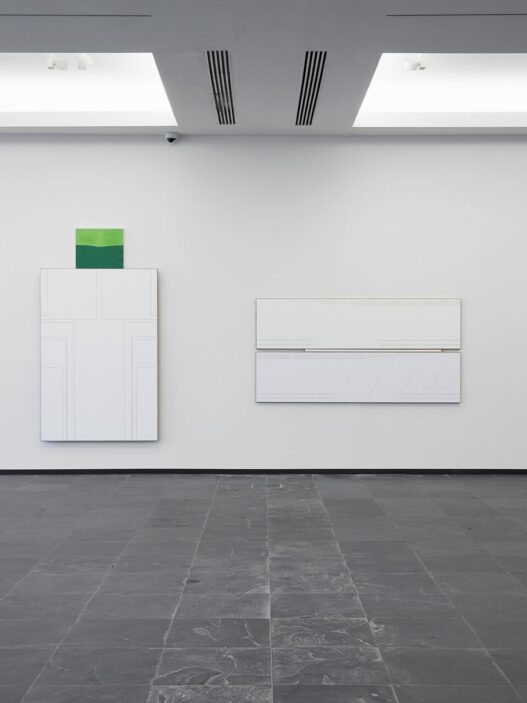July 2–November 27, 2022
Joris Ghekiere (1955-2016) was a well-known and respected painter. He achieved a special place in the field of painting thanks to his in-depth research into and exploration of the medium’s potential. However, Joris Ghekiere also left behind an incredibly rich body of work on paper, which is hardly known. The artist stored hundreds of sketches, collages, paintings, and watercolours in a chest of drawers at his workshop from the early 1980s until just before his death. More than 600 pieces, made in a variety of forms, using a range of techniques, and developed over more than 35 years. Together, they create an unexpected body of work that closely resembles his well-known paintings.
Joris Ghekiere has never displayed this collection in public, save from a few drawings. Even the numerous curators, critics, and fellow artists who frequently paid him a visit at his workshop were not seen it, let alone the general public. The chest of drawers and this facet of Ghekiere’s artistic practice remained a well guarded secret for a very long period, with the exception of a few close acquaintances.
Joris Ghekiere spent a year traveling throughout Asia in the years 1990–1991 which are examined in his book Journey on paper. On this months-long expedition, no fewer than 170 autonomous works of art were produced. The first museum to show a sizable portion of this collection of works on paper is Mu.ZEE.
A cupboard, a chest of drawers, a drawer: repository of memories
A cupboard, a chest of drawers or just a drawer—these are three objects that turn up regularly in Joris Ghekiere’s work. They appear as rather surreal or mysterious elements in the middle of a marsh, a colonnade or on a Japanese travel drawing. Next to a small drawer on one of his drawings, the artist wrote: “Event. Imagining. Intimate relationship between repositories and hiding places. The reality cannot be grasped. It is interwoven with emotions, thinking, you can only evoke them, touch a nerve, touch on the reality, show the repositories where the mind piles up its emotions. Images emerge, take shape, images from the imagination which cannot immediately be localised.”
A personal archive made up of works produced while Joris Ghekiere was traveling as well as experiments he conducted in the studio can be found in his chest of drawers, which serves as a memory bank. It offers us a remarkable window into the artistic process. Compared to his paintings on canvas, which, as he stated it so eloquently himself, left little branding for the observer, this collection of works on paper takes us closer to Joris Ghekiere the artist.
His own studio versus a mobile studio
The works on paper can be divided into two categories. In the first group, works made in the familiar setting of the artist’s own studio, we find, among other things, sketches after old masters, some style exercises and many landscapes. Most striking, however, are the many collages, drawings and experiments, which can often be directly linked to a specific work of art or a thematic series. These works show similarities with the evolution, variation and layering that recur in Joris Ghekiere’s paintings, and therefore provide an insight into the creation process that preceded his works on canvas. In his preliminary studies we see how the artist departs from certain almost banal images and how he works on them by cutting, pasting and using unusual colours, or painting threatening shadows, in order to arrive at a design or starting point for a painting. Experimentation as a preliminary study for a work or a series is a practice we find many artists employ. The resulting creations not only have an artistic, but also an unmistakable documentary value.
Travel-related pieces by Joris Ghekiere fall under a separate category. The artist was a keen traveler from an early age. He spent a few months in Spain shortly after finishing his studies, and then made multiple excursions to Turkey, Italy, Japan, the Philippines, China, Russia, and India. Joris Ghekiere recorded his thoughts, experiences, and comments during his travels in writing, spoken word, and mainly visual form. As a result, the sketchbooks, journals, watercolors, and drawings provide remarkable visual records of his trips. These pieces, which Joris Ghekiere created outside of the privacy of his own studio but instead in settings and situations that were extremely important to him, reflect his intense passion for exploration and the unknown as well as his fascination with the expanse of nature.
In 1988 already, Joris Ghekiere described himself as ‘a desert wanderer with sand in his eyes’. It is an image that the artist would carry with him for the rest of his life and that is applicable to his approach both to travelling and to painting: “My orientation is good, I am a chess player and want to keep an overview and control, yet as an ardent traveller I find lack of orientation much more interesting. Going curiously into strange and unknown territory.”
The year 1990: one year journey on paper
Among his many trips, a long journey through Asia stands out. On 1 August 1990 Joris Ghekiere set off, with his beloved Inge Henneman, for Asia. There they travelled together through the Philippines, China, Pakistan, India, Japan and Thailand. A year later, in 1991, they returned to Belgium. During this months-long trip Ghekiere made at least 170 autonomous works, as well as countless sketches, designs, collages and sketchbooks, sent or brought back with him and carefully preserved. The many impressions from his travels form the core of this exhibition. They show a clear break in style with the mainly dark works that he made as a young man in the 1980s. We can also see the genesis of motifs and patterns which, abstracted or otherwise, return in Ghekiere’s later painting oeuvre. Contrasting colours, surface division, the use of text, as well as motifs like the circle, the funnel, the telescope and perspective lines make their appearance in Ghekiere’s work during this trip.
Joris Ghekiere painted and drew in nature, rented studios, turned hotel rooms into studios and even studied with a renowned miniaturist in Jaipur (India). The impact of the overpowering landscapes on the artist is very noticeable in his creations. We also see an enormous fascination with the form language used by other cultures in their architecture, religion, philosophy and even political propaganda. In China, for example, Joris Ghekiere made a series of paintings on posters of Mao Zedong, in Pakistan he was inspired by the old Baltit Fort in the Hunza Valley, and in Jaipur he became intrigued by a miniature depicting the story of Krishna subduing the water snake Kaliya. Joris Ghekiere processed these and many other impressions into pictures that bear witness to a very formal interest in certain symbols, customs and aesthetics from other cultures. The content and meaning were interesting to the artist, but rather incidental to the achievement of a strong pictorial image.
“1 year journey on paper…drawings and paintings…China India Japan
Walking freely my shadow before me…Hotel rooms. The beach and…were my studio.”
This was the announcement for the tiny show that Joris Ghekiere and Inge Henneman mounted in the artist’s studio in the fall of 1991. The public display of Joris Ghekiere’s works on paper is still one of the uncommon events. About 30 years later, 130 of the 170 travel drawings by Ghekiere have been compiled for the Mu.ZEE show. The photos, which depict a young artist who is a desert nomad with sand in his eyes, haven’t lost a bit of their pictorial impact.
Mu.ZEE
Romestraat 11
8400 Oostende
Belgium
Hours: Tuesday–Sunday 10am–5:30pm
T +32 59 24 21 91
[email protected]









